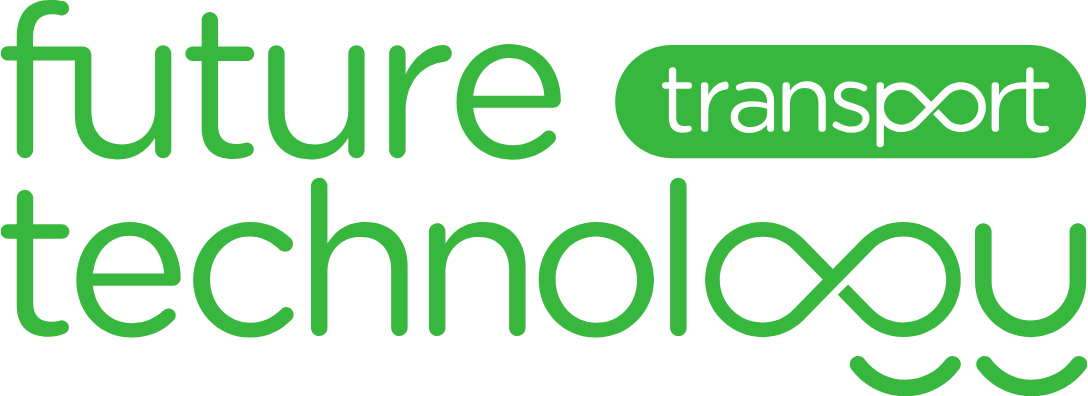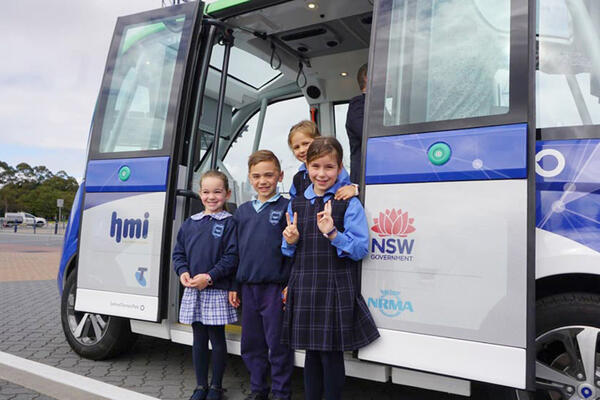
Sydney Olympic Park Smart Shuttle Trial
Sydney Olympic Park Smart Shuttle Trial
Transport for NSW continuously seeks opportunities to work with industry on intelligent transport systems and identifying ways to develop and test new technology.
During 2017 to 2020 Transport for NSW partnered with HMI Technologies, NRMA, Telstra, IAG, UTS and the Sydney Olympic Park Authority to test and trial an automated smart shuttle at the Sydney Olympic Park precinct.
The pilot was the first precinct-based trial of an automated shuttle in Australia and was the first trial of vehicle automation to take place in NSW. With a focus on testing automated vehicle technology, the trial presented a unique opportunity to develop a research platform that improves customer mobility.
The smart shuttle trial was established to test the readiness levels of deploying automated shuttles within the urban settings of New South Wales. This involved determining how automated shuttles interact with infrastructure, customers, and other road users.
The trial was carried out over three key phases with the later stages of the project seeing the self-driving shuttle carry up to 15 customers around precinct grounds, venues, and businesses.
Key phases and project milestones
Phase One: Testing the smart shuttle off-road
Phase one of the NSW Smart Shuttle trial commenced in the third quarter of 2017 and involved testing the automated vehicles basic operation in an enclosed off-road environment at Newington Armory, adjacent to Sydney Olympic Park.
This stage focused on testing the technical operations of the automated shuttle, along with delivering regulatory and safety compliance requirements.
Phase Two: Customer feedback
The second stage of the trial focused on gathering customer feedback and allowed 126 members of the general public to ride on the shuttle.
All trips occurred on secluded public roads that were closed to other vehicles and pedestrians. Public surveys were issued to gather insights and support statistical modelling and data collection.
Phase Three: Testing the automated shuttle on public roads
In the final phase of the trial, the automated shuttle operated on public roads in a live and uncontrolled environment around Sydney Olympic Park.
This allowed the project team to test how the vehicle would handle common tasks such as left turn, right turn, stop sign, shared pedestrian zone, roundabouts and signalised intersections in a real-world environment.
Key achievements and Australian firsts
- Australian first precinct-based trial of an automated shuttle
- NSW's first trial of an automated shuttle
- Australia’s first automated shuttle that effectively integrated with traffic lights
Watch our smart shuttles travel around metropolitan and regional NSW
Image
Image controls:
Image
Image controls:
Project insights and recommendations
Customers and trial participants were generally positive towards the technology and identified automated shuttles would be more effective if the included they following:
- the shuttle should be able to detect the nature of the obstacle in front of it. For instance, tree branches hanging over the road or any overgrown vegetation hanging over the road should not cause the vehicle to stop abruptly
- the shuttle should be able to detect vehicles coming from multiple directions (for example, roundabouts or unsignalised junctions). When vehicles are detected the shuttle should not stop suddenly or jolt, instead any braking that is required should be gradual
- the lag in acceleration from a stationary position (time between request to accelerate to when the shuttle begins accelerating), should be minimum so that it does not impact surrounding vehicles
- the shuttle should have wheelchair access and simple methods for securing them within the shuttle
- the use of universal charging plugs is advocated to enable the shuttle to make use of existing/new charging points.
Next steps
The automated shuttle trial has extended our expertise and knowledge of connected and automated vehicle technology and marks a major step towards initiating smart transport solutions.
The findings derived from the project will support the implementation of future trials, future mobility policies, and infrastructure readiness practises.
Further research, testing and exploration of this technology is needed before we can safely integrate connected and automated vehicles within our road network.
Transport for NSW is preparing a strategic CAV adoption plan that will pave the way towards NSW CAV readiness.
Sydney Olympic Park Image Gallery
Image
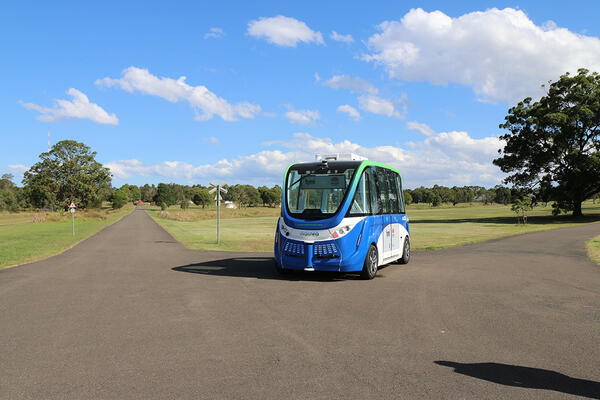
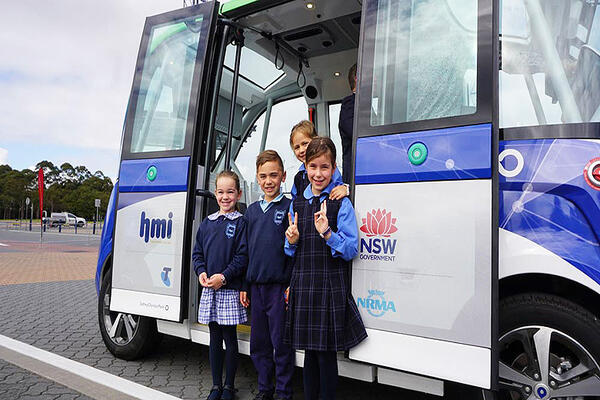
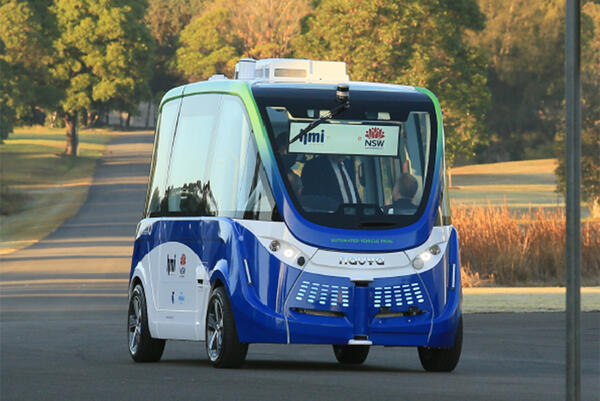
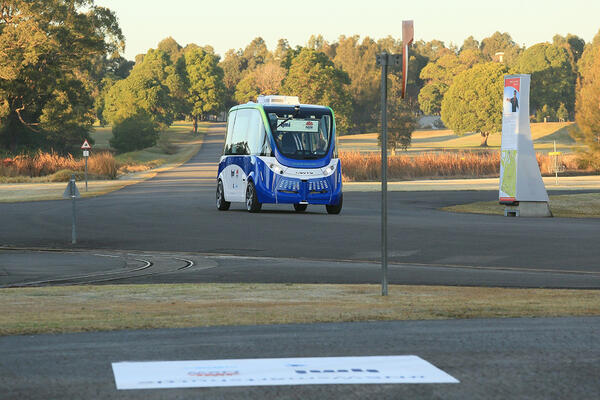
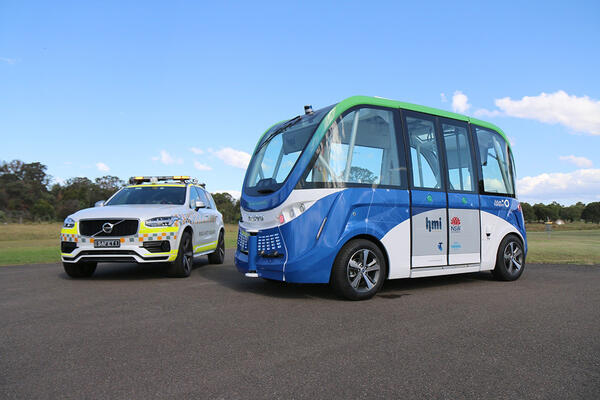
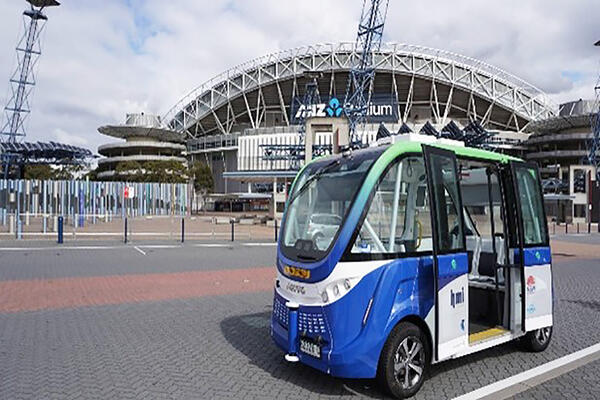
Image controls:
More information


